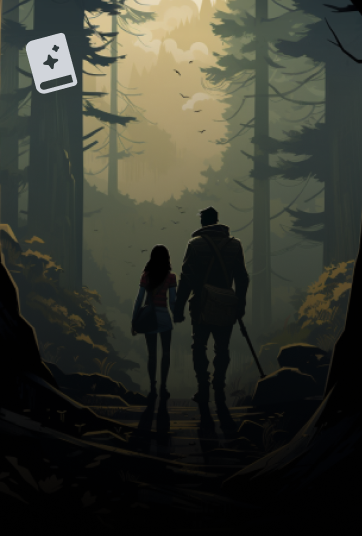

Sepulchre
Ratings7
Average rating3.7
A gripping tale of mystery and adventure from the bestselling author of THE TAXIDERMIST'S DAUGHTER and LABYRINTH. 1891. Seventeen-year-old L�onie Vernier and her brother abandon Paris for the sanctuary of their aunt's isolated country house near Carcassonne, the Domaine de la Cade. But L�onie stumbles across a ruined sepulchre - and a timeless mystery whose traces are written in blood. 2007. Meredith Martin arrives at the Domaine de la Cade to research a biography. But Meredith is also seeking the key to her own complex legacy and becomes immersed in the story of a tragic love, a missing girl, a unique deck of tarot cards and the strange events of one cataclysmic night a century ago...
Series
Series
3 primary booksLanguedoc
Languedoc is a 3-book series with 3 primary works first released in 2001 with contributions by Kate Mosse.
Reviews
Popular Reviews
Reviews with the most likes.
ORIGINALLY POSTED AT Fantasy Literature.
Kate Mosse's Sepulchre is a historical fantasy – historical fiction with fantastic elements. I enjoy both genres, and this novel features a female graduate student (somebody I can relate to) as one of the main characters, and it's available on audiobook, so I thought it would be good entertainment on my commute. I got about ten chapters in before quitting.
The book seems well-researched, is competently written, the tone switches easily and successfully from past to present and back, and the characters are interesting enough. Here is the problem: It is full of enormous amounts of tedious descriptions of ancient and current French landmarks, French historical events, French historical figures, and untranslated French dialogue. I realize, of course, that France is the setting of this historical novel, but the effect of all of this name-dropping is to make me think that Ms Mosse feels the need to prove she did her research – she's trying too hard, and it comes off as pretentious. And obnoxious. Especially when I'm listening to it in audio format and I can't just skim over the French words. Here are some examples (some are from later in the book):
“It was not quite dawn, yet Paris was waking. In the distance, Anatole could hear the sounds of delivery carts. Wooden traps over the cobbles, delivering milk and freshly baked bread to the cafes and bars of the Faubourg Montmartre. He stopped to put on his shoes. The rue Feydeau was deserted; there was no sound except the clip of his heels on the pavement. Deep in thought, Anatole walked quickly, to the junction with the rue Saint-Marc, intending to cut through the arcade of the Passage des Panoramas. He saw no one, heard no one.”
“By the time a smoggy and hesitant dawn broke over the offices of the Commissariat of Police of the eighth arrondissement in the rue de Lisbonne, tempers were already frayed. The body of a woman identified as Madame Marguerite Vernier has been discovered shortly after eight o'clock on the evening of Sunday, September 20. The news had been telephoned in from one of the new public booths on the corner of the rue de Berlin and the rue d'Amsterdam by a reporter from Le Petit Journal.”
“In the next stack she discovered a first edition of Maistre's Voyage autour de ma chambre. It was battered and dog-eared, unlike Anatole's pristine copy at home. In another alcove she found a collection of both religious and fervently antireligious texts, grouped together as if to cancel one another out. In the section devoted to contemporary French literature, there was a set of Zola's Rougon-Macquart novels, as well as Flaubert, Maupassant and Huysmans –indeed, many of the intellectually improving texts Anatole tried in vain to press upon her, even a first edition of Stendhal's Le rouge et le noir. There were a few works in translation but nothing entirely to her taste except for Baudelaire's translations of Monsieur Poe. Nothing by Madame Radcliffe or Monsieur Le Fanu . . . The first was Dogme et rituel de la haute magie by ??liphaas L??vi. Next to it was a volume titled Trait?? m??thodique de science occulte. On the shelf above, several other writings by Papus, Court de G??belin, Etteilla and MacGregor Mathers. She had never read such authors but knew they were occultist writers and considered subversive. Their names appeared regularly in the columns of newspapers and periodicals.”
At first, I found myself rolling my eyes at every French phrase and name-drop, but since that started to become a driving hazard, I just quit listening. I would much rather read a story whose purpose is to entertain me, not to enlighten or impress me. Sadly, Sepulchre did none of these things.
Read this review in context atFantasy Literature .
Another good book. The stories weave around each other so well. I can't wait to read the next one.
Another supernatural/conspiracy thriller in the “DaVinci Code” vein, except this one revolves around....tarot cards? Ho hum. That's not nearly as intriguing a premise as the “DaVinci Code”. Still, it was an enjoyable read and although it's 500+ pages, it went quickly.






















